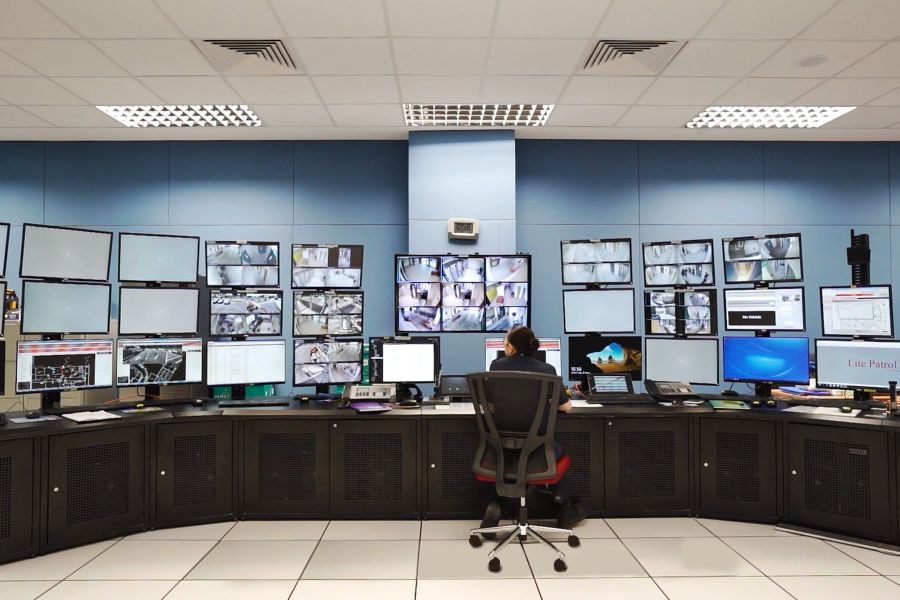Article
Margarida Damas & Sara Afonso
Radicalisation and the difficulties of post-prison adjustment
Moreover, this transition is also challenging to the receiving environment, encompassing the individual’s family and overall community.
This reintegration requires a two-way effort aiming to ensure constructive and beneficial outcomes. Hence, the reintegration process requires an integrated and comprehensive reintroduction in the community, which should provide opportunities for the previously detained person to choose to live a law-abiding life and productively function in society (Morton & Silber, 2018). Therefore, the prison-exit transition should incorporate a reentry process followed by, ideally, a steady resettlement, which should lead to a stable reintegration (Walkenhorst, Baaken, Ruf, Leaman, and Korn, 2018).
Therefore, when considering the possibilities of radicalisation and engagement in extremism in a post-release setting, different possibilities emerge, as the volatility, challenges, and vulnerabilities that describe the prison-exit transition can increase the adherence to radical or extremist ideologies, especially when building on previous socio-political grievances aggravated within the prison walls. Nevertheless, the resettlement process, if positive and constructive, can also create the conditions to decrease the readiness to adhere to radical or extremist solutions, especially when met with tailored and comprehensive rehabilitative and reintegrative efforts.
Consequently, the probability of adhering to radical or extremist ideologies, when framed as a reentry challenge, calls for close and grounded support, which should draw a continuum, beginning between walls and extending to community settings (Walkenhorst et al., 2018). However, to do so, there must be a clear understanding of this potential of continuity or change and its possible implications for the reintegration path, thus requiring a solid understanding of the transitioning individual and their social context (Decker & Pyrooz, 2020). To assist this work, there is a need for adequate tools to determine an individual’s readiness to adhere and/or engage with radical thinking and extremist attitudes, allowing to adjust and adapt the after-care support provided (Clemmow, Schumann, Slaman & Gill, 2020).

The need to assess and intervene: How to support and elicit change?
For such, acceptance, transparency, and legitimacy are required, calling for the deconstruction of heavily focused risk assessment procedures and securitised perspectives.
Hence, broader work is needed, going beyond observable potential risk signs of radicalisation, aiming to comprehend the transitioning individual and how the resettlement path is being shaped, perceived, and dealt with. Therefore, assessment procedures need to follow an individualised approach, in which the individual is holistically framed and, most importantly, respected as a free and deserving community member.
As a result, the focus must be shifted from assessing the risk of violent extremism, instead being placed on understanding the propensity of engagement in radical thinking and extremist behaviours.
By using the notion of vulnerability instead of risk, the focus is placed on an open and fluid process between the newly-released individual and their environment, with different possibilities but no certain outcome, in which the potential of adhering to radical thinking and engaging in extremist activities must be looked as a reentry vulnerability. By doing so, any notions of a rigid or inborn predisposition are pushed aside, mitigating the often negative perceptions associated with the notion of risk.

What and how to assess
In fact, symbolic concerns must be held at the core of the assessment (Hanson, 2009), as the language used to communicate a potential propensity to adhere to radical ideas and extremist behaviours can have a clear repercussion on interventive and reintegrative outcomes.
The common practice of categorising risk as low, moderate, or high, without providing clear and specific guidance on how to mitigate it, can instead hinder intervention efforts (Hanson, 2009).
Accordingly, when working in a post-release setting, in which the focus should be placed on promoting reintegration and managing any challenge that comes along, assessment procedures must assist and inspire follow-up support measures, thus promoting a tailored intervention.
Hence, instead of relying on an overall score and a risk-centred result, it is important to identify and signal the specific dimensions which require intervention by assessing their relevance to the individual’s case management plan, customising the provided support to their unique needs.
The R2COM initiative: Deconstructing risk with grounded
tools and knowledge
References
Clemmow, C., Schumann, S., Salman, N. & Gill, P. (2020). The base rate study: Developing base rate for risk factors and indicators for engagement in violent extremism. Journal of Forensic Sciences, 65(3), 865-881.
Cherney, A. (2021). The release and community supervision of radicalised offender: Issues and challenges that can influence reintegration. Terrorism and Political Violence, 33(1), 119-137.
Damas, M. (2021). Desafios da vida pós prisão: O estigma prisional e a readaptação à vida extra muros. [Master Dissertation] ISCTE-IUL, Lisbon.
Decker, S. & Pyrooz, D. (2020). The imprisonment-extremism nexus: Continuity and change in activism and radicalism intervention in a longitudinal study of prisoner reentry. PloS ONE, 15 (11), 1-21.
EUROPOL. (2021). European Union Terrorism Situation and Trend report 2020 (TE-SAT). EUROPOL.
EPEX (European Practice Exchange). (n.d.). The art of seeing promise over risk. The RecoRa Institute, Violence Prevention Network.
Hafez, M. & Mullins, C. (2015). The radicalisation puzzle: A theoretical synthesis of empirical approaches to homegrown extremism. Studies in Conflicts & Terrorism, 38(11), 958-975.
Hanson, R. (2009). The psychological assessment of risk for crime and violence. Canadian Psychology, 50(3), 172-182.
Morton, J. & Silber, M. (2018). When terrorists come home: The need for rehabilitating and reintegrating America’s convicted jihadists. Counter Extremism Project.
Neumann, P.(2010). Prisons and terrorism: Radicalisation and de-radicalisation in 15 countries. The International Centre for the Study of Radicalisation and Political Violence.
Reiter, J., Dooseje, B & Feddes, A. (2021). Radicalization and deradicalization: a qualitative analysis of parallels in relevant risk factors and trigger factors. Peace and Conflict: Journal of Peace Psychology, 27(2), 268–283.
Sarma, K. (2017). Risk assessment and the prevention of radicalization from nonviolence into terrorism. American Psychologist, 72(3), 278–288.
Sian, K. (2017). Born radicals? Prevent, positivism, and race-thinking. Palgrave Common, 3(6), 1-8.
Soufan, A. & Schoenfeld, D. (2016). Regional hotbeds as drivers of radicalization. In A. Varvelli, Jihadist hotbeds: Understanding local radicalization processes, 15-38, ISPI: Milano.
Vermeulen, F. (2014). Suspect communities, targetting violent extremism at the local level: Policies of engagement in Amsterdam, Berlin and London. Terrorism and Political Violence, 26(2), 286-306 5.
Walkenhortst, D., Baaken, D., Ruf, T., Leaman, M. & Korn, J. (2018). Rehabilitation Manual: Rehabilitation of radicalised and terrorist offenders for first-line practitioners. Radicalisation Awareness Network.
Weert, A. & Eijkman, Q. (2019). Subjectivity in detection of radicalisation and violent extremism: A youth worker’s perspective. Behavioural Sciences of Terrorism and Political Agression, 11(3), 191-214;

Margarida Damas
Margarida Damas joined IPS_Innovative Prison Systems as a consultant and researcher in 2021, being assigned to the Radicalisation, Violent Extremism and Organised Crime Portfolio, where she works on several projects, mostly focused on promoting communitarian integration and social development. Margarida holds a degree in Criminology from the University of Porto and a Master in Sociology, specialised in Human Rights from ISCTE University, having a special research interest in post-prison adjustment and social integration of socially excluded groups.

Sara Afonso
Sara Afonso is Head of Directory for Communitarian Inclusion and Social Development at IPS_Innovative Prison Systems, where she works in community-centred projects for the prevention of radicalisation, extremism, and adjacent phenomena. Sara holds a bachelor’s degree in Criminology from the University of Porto, and a master’s degree in Terrorism, International Crime and Global Security from Coventry University, with a focus on the topics of disengagement and deradicalisation, as well as the reintegration of former extremist or terrorist individuals into the community.



